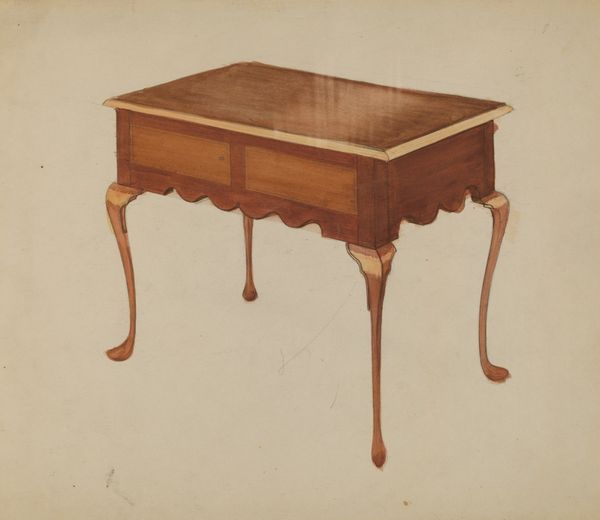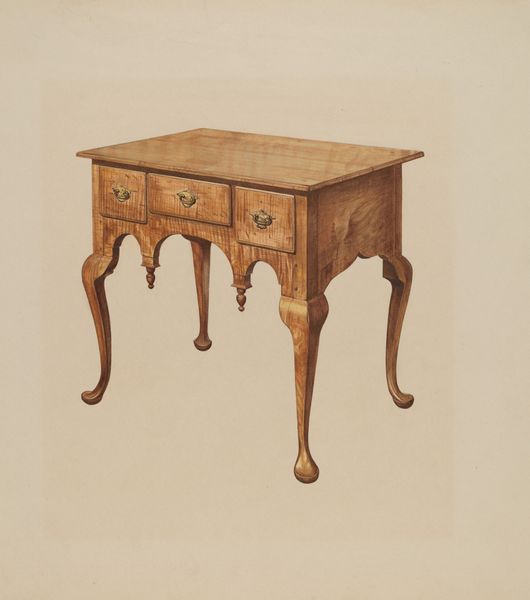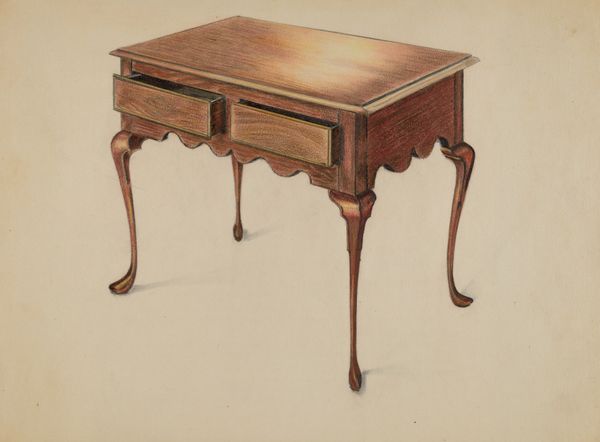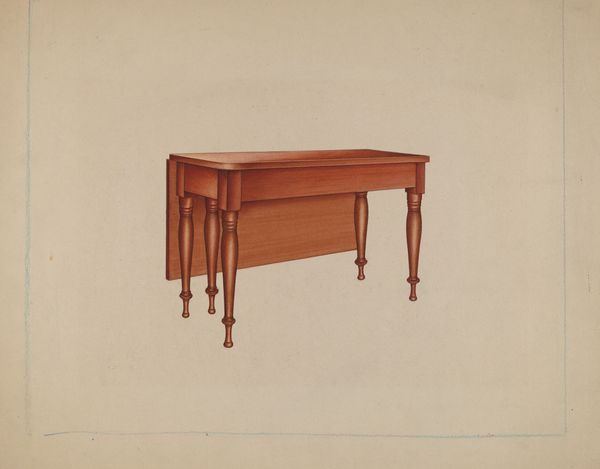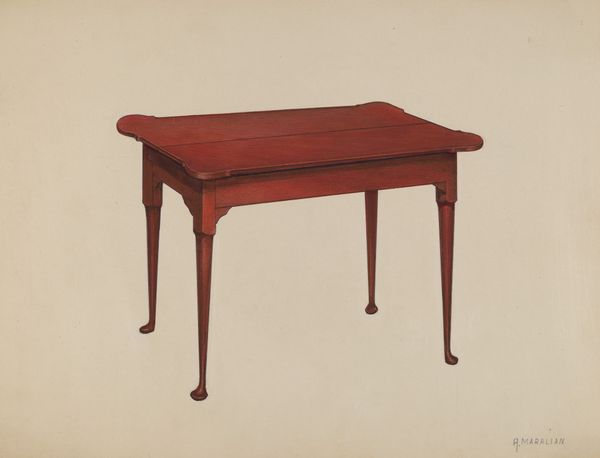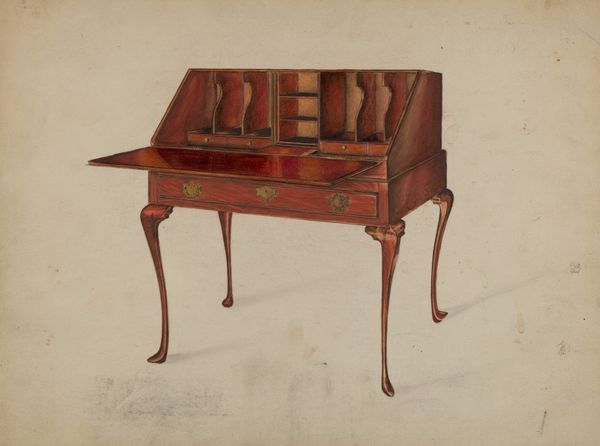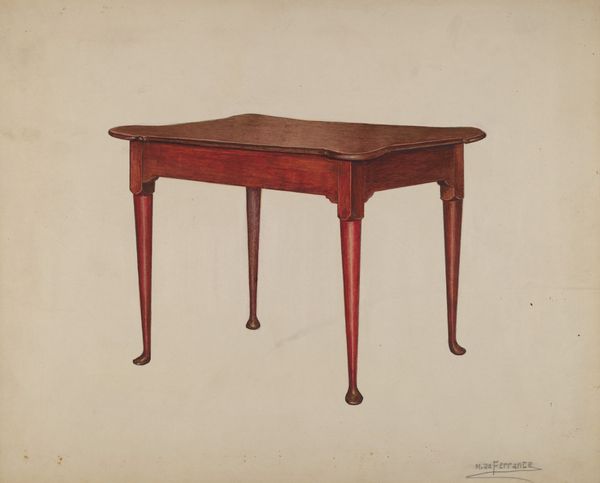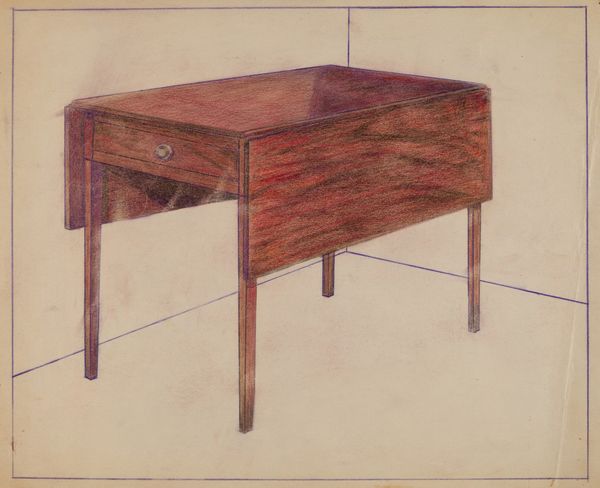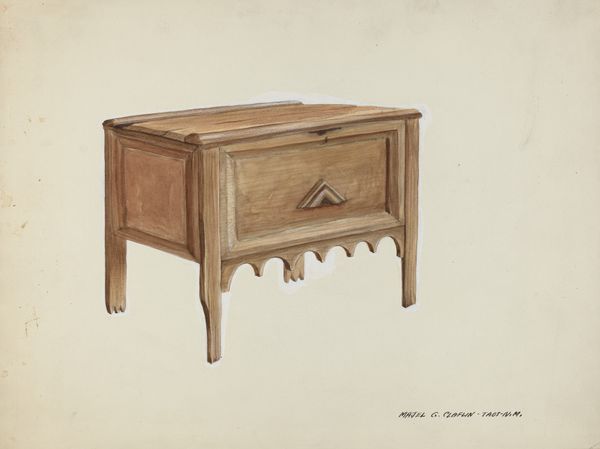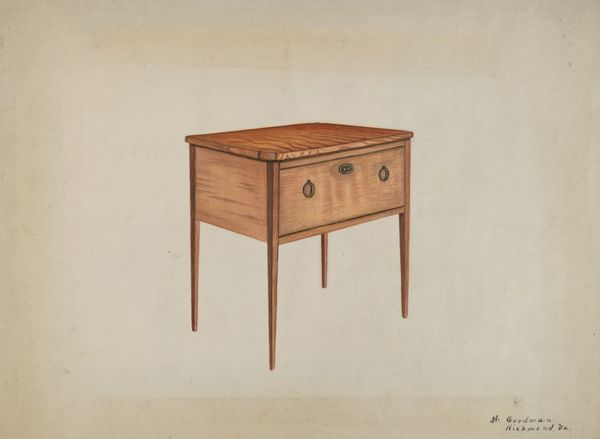
drawing
#
drawing
#
aged paper
#
toned paper
#
light pencil work
#
yellowing background
#
retro 'vintage design
#
underpainting
#
yellow element
#
watercolour illustration
#
watercolor
#
gold element
Dimensions: overall: 23 x 25.3 cm (9 1/16 x 9 15/16 in.) Original IAD Object: none given
Copyright: National Gallery of Art: CC0 1.0
Editor: Here we have an anonymous drawing titled "Rectangular Serving Table," created sometime between 1935 and 1942. It appears to be rendered in watercolor on paper. There’s something nostalgic about it – almost like a forgotten advertisement. What do you make of this piece? Curator: Well, immediately, this object screams of a specific kind of domestic aspiration deeply tied to gender roles and class in the interwar period. Consider the materiality: watercolour, a medium often associated with women artists and hobbies rather than "high art," depicting a serving table, an object designed to facilitate a specific type of feminine labour. Doesn't it invite a consideration of the domestic sphere as a site of both comfort and constraint? Editor: I see what you mean. The table, presented so cleanly, almost feels like a stage set for performing the rituals of hospitality. It makes you wonder who it’s really serving, doesn't it? Curator: Exactly. The image feels inherently coded. Think about the rise of consumer culture during this period and how design, even in something as ostensibly simple as a serving table, became a tool for constructing identity and reinforcing social hierarchies. How does this image participate in that project, and whose story is missing from the picture? Editor: So, beyond just being a pretty drawing, it's reflecting these complex social and political forces. I never would have considered that on my own. Curator: And that is why contextualising visual material, no matter how quotidian it may seem, opens a wealth of perspectives. We get to ask what assumptions are encoded in the "ordinary" items that furnish our lives and culture.
Comments
No comments
Be the first to comment and join the conversation on the ultimate creative platform.
